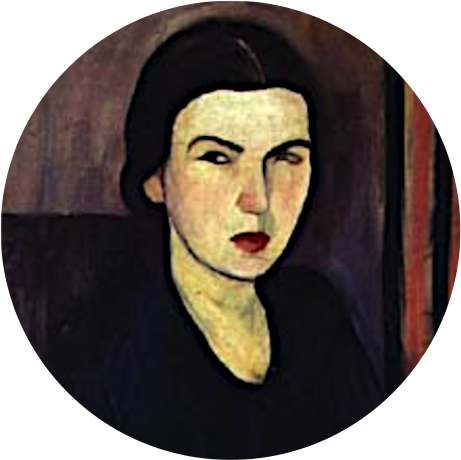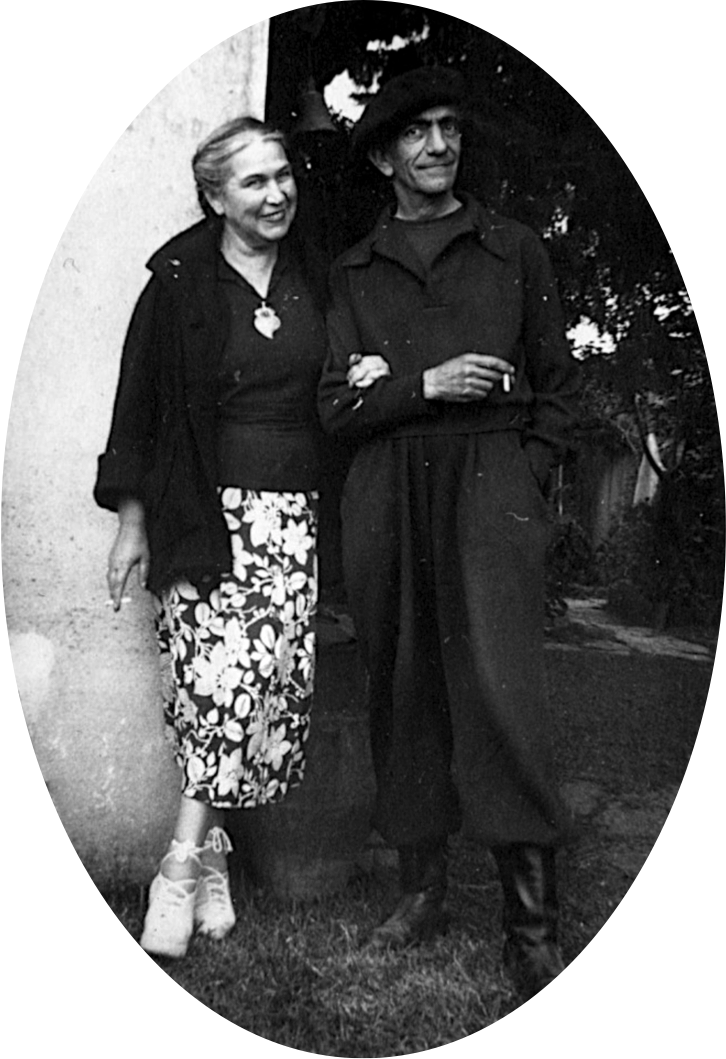

Sara Afonso graduated in Painting from the School of Fine Arts, where she was a student of Columbano. Despite having learned techniques linked to post-Romantism, her plastic works had a clear inclination towards Modernism.
While initially revealing a tendency for portrait, her painting later represented popular scenes, such as fairs, pilgrimages and village weddings. She also explored the mysteries of traditional and popular mythology, including mermaids and starfish. In effect, her most original values lie in a curious mixture between the naïveté of the popular arts and their feminist appropriation, deliberately anti-academic and anti-erudite.
After living in Paris for the most part of the 1920s, she married Almada Negreiros in 1936, an artist she greatly admired from a young age.
Against all conventions, she became the first woman to attend the A Brasileira café, in Chiado (downtown Lisbon), at the time exclusively reserved to men.
Furthermore, Sara Afonso exhibited at the First Independent Artists Saloon, held in 1930, and organized an individual exhibition, in 1939.
In the 1940s, after participating in the Exhibition of the Portuguese World and receiving the Amadeu Souza-Cardoso Prize, she withdrew from her art in order to attend to her family, having returned to it solely during her final years, when she produced conceptually simpler drawings, yet filled with expression, tenderness and delicacy.
*****
Sara Afonso diplomou-se em Pintura na Escola de Belas-Artes, onde foi aluna de Columbano. Aprendeu técnicas relacionadas com o pós-romantismo, porém as suas obras plásticas tinham uma clara inclinação para o Modernismo.
A sua pintura revela, inicialmente, uma tendência para o retrato passando depois a representar cenas populares: feiras, romarias, casamentos na aldeia. Explorou também os mistérios tradicionais e da mitologia popular, com as suas sereias e estrelas do mar. Os seus valores mais originais são uma curiosa mistura entre o ingenuísmo das artes populares e a sua apropriação feminista, intencionalmente antiacadémica e antierudita. Viveu em Paris nos períodos de 1923 a 1924 e de 1928 a 1929. Casou-se aos 35 anos com Almada-Negreiros, em 1936, artista que muito admirava desde nova.

Contra todas as convenções, foi a primeira mulher a frequentar o café A Brasileira, no Chiado, então exclusivamente reservado ao sexo masculino. Sara Afonso expôs no Primeiro Salão de Artistas Independentes, realizado em 1930 e fez uma exposição individual em 1939.
Já nos anos 40 participou na Exposição do Mundo Português e recebeu o Prémio Amadeu Souza-Cardoso.
Em meados dos anos 1940, abdicou da sua arte para se dedicar à família retomando-a apenas nos últimos anos da sua vida, para realizar desenhos de concepção simples mas plenos de expressão, de ternura e delicadeza.
As meninas (1928).
Casamento (1949).
References: